In this post we discuss if you need to use on hold music in your business telephone system, how to choose the best music to boost customer satisfaction, and what audio file formats work best with modern business phone PBX systems.
We also prepared a detailed walk-through tutorial to help you convert the music files into the proper format before uploading it to your phone system.
Jump straight to tutorial: How to format music files before uploading to your PBX phone system
Does your business need on hold music?
Silence is golden. However, it’s not when it comes to putting your customers on hold.
Look at the tweet below, I think it sums it up quite well:
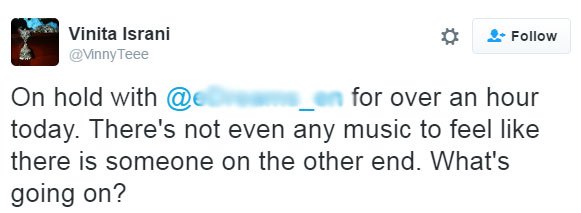
Yes, if you service clients over the phone, your business needs on hold music.
How to pick best on hold music for my business?
On hold music has a clear purpose – to convince your clients stay on the line and not to hang up. After all you do want to talk to them.
The better is music you use, the higher are the chances your clients will actually wait for you (or your customer / sales representative) to pick up the phone.
While using generic on hold music in your business phone system is a good start, it best to put some though into what sort of music is best for your business.
What kind of music works best for YOUR clients?
When choosing music for your company’s client facing phone system, consider this 4 simple tips:
1. Choose music that fits your industry / brand
Align music with your type of industry, business, and / or your brand.
I wouldn’t use upbeat goofy music in an accounting or legal firm’s phone system but it would work great for a childcare.
2. Choose music that will sound well over the phone
Use music with steady, mid-tempo beat. Avoid extremely fast or slow music.
Avoid sudden volume drops or peaks. Avoid complex musical arrangements with wide dynamic range.
Classical music may be your first choice due to its general appeal but it often sounds terrible over the phone.
Avoid musical genres that focus heavily on specific low or high frequencies. All these beautiful bass drops will be completely lost when transmitted over the phone line.
3. Spread Holiday cheer
Don’t be afraid to cheer up your customers with Halloween or Christmas music during the appropriate holiday season.
But be aware that not everyone is celebrating these holidays, so know your customer!
4. Keep it simple
There are also technical limitations to consider (more on this later).
Overall, keep it simple to make sure the music sounds good even on a low-quality phone line.
Since the music will have to be compressed into lower quality format, complex music with lots of details and nuances will sound messy over the phone.
Free infographic: How to choose best on hold music for my business
Can i use a popular song as on hold music?
If you simply thinking of downloading a popular song from you favorite digital store and uploading it to the PBX system, I would strongly advise against it.
That would illegal and punishable under the copyright law in most countries.
As a rule of thumb, you must obtain permission from the copyright owner to use any copyrighted content, especially for the commercial use.
Depending on your budget and the specific artist you have in mind, this may be possible. However, working out the licensing agreement may get complicated and quite expensive. Some artists may even refuse it outright.
If you still want to try, here’s a post that explains how you can legally play copyrighted music in your business.
Alternatively, you can easily license affordable royalty free music created specifically for commercial use, including on hold PBS systems.
Here are some on hold music samples that, according to our customers, work great in their telephone systems:
When licensing music for your business PXB, I generally recommend using music that is not registered with performance rights organizations (PROs).
This will save you the need to check if you are required to obtain a separate performance license from a PRO in your country.
Related: Listen to our best on hold music (top 10 most downloaded).
Related: Download ready to use on hold messages for your business phone.
how to prepare on hold music for upload to a PBX telephony system
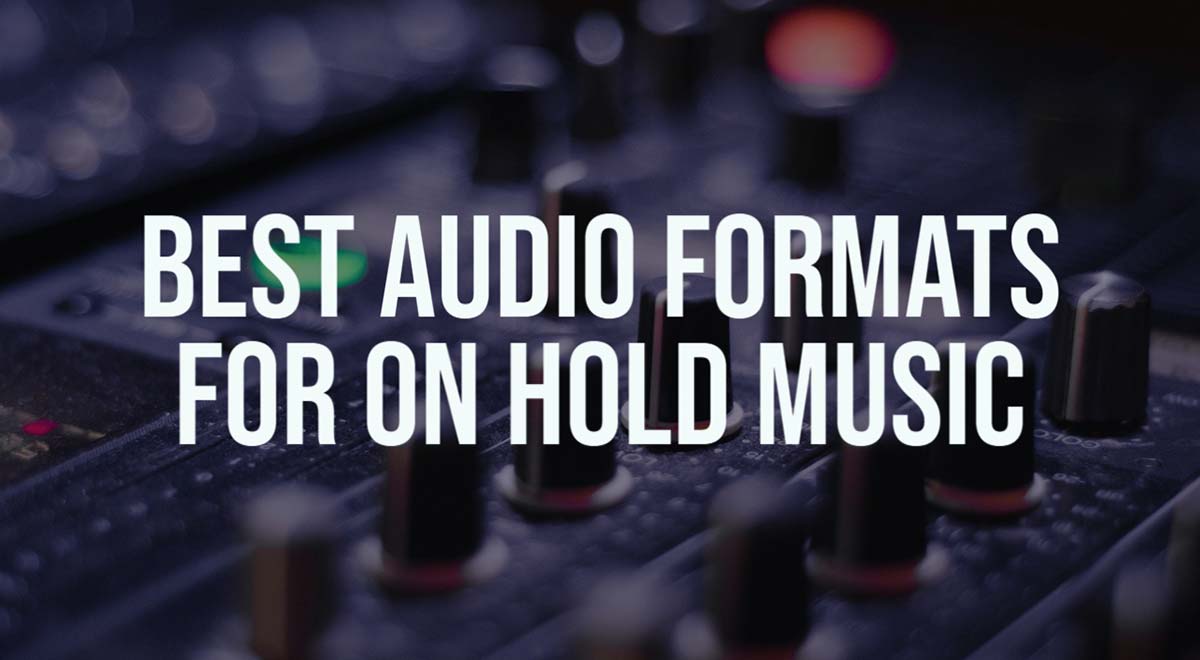
It’s important to format the music in a specific way to make sure your PBX provider can use it.
Just imagine spending hours looking the perfect on hold music track and uploading it to your phone system, only to get the error like this:
The hold music file you recently uploaded contains errors and cannot be utilized with your service. This is typically caused by an invalid music file format.
Let’s look at some of the most common technical requirements shared to by most PBX service providers.
What audio file formats can be used for on hold music?
The default telephony standard is mono 8-bit PCM μ-Law audio with a sampling rate of 8Khz.
This standard is designed for voice (and not high quality music) and provides acceptable results with minimum bandwidth.
Let’s see what this means:
1. Mono
The vast majority of modern music is recorded in stereo. That is, using audio two channel, commonly referred to left and right.
Mono recordings only contain one audio channel.
2. PCM
PCM (pulse code modulation) refers to uncompressed WAV files.
3. 8 Bit depth
In digital audio using PCM, bit depth is the number of bits of information in each sample. Generally speaking, the higher the bit depth, the better is the recording. For example, a CD quality recording has 16 bits per sample and DVD-Audio and Blu-ray support up 24 bits per sample.
Many modern PBX systems also accept 16 Bit audio for on hold music.
4. uLaw
The μ-law algorithm (often referred to as “u-law”) is a companding algorithm often used in 8-bit PCM digital telecommunication systems. The purpose of this algorithm is to improve the quality of the audio signal with limited bandwidth. In simple words, it tries to make a crappy audio sound better.
5. 8 kHz Sampling rate
In audio, the sampling rate refers to “samples per second”. For example, a CD recording uses 44.1 kHz rates, which is 44,100 samples per second.
The phone signals intended to carry the human speech only can be sampled at a much lower rate, allowing a sampling rate of 8 kHz.
You can encode both WAV and MP3 audio files to qualify for the above standard but we generally recommend avoiding lossy compression formats and use WAVs for best results.
Free infographic: Recommended audio file format for on hold music
The above file format should satisfy the majority of modern PBX systems. However, please note that the specific requirements may vary across different providers.
specific technical requirements by provider
That’s not a comprehensive list by all means but this should help you to see the differences.
Intermedia Cloud PBX
WAV or MP3, mono, 16 Bit, 8 or 11 kHz, PCM
FreePBX
WAV, mono 16 Bit, 8 kHz, u-Law
Panasonic
WAV, mono, 16 Bit, 8 kHz, mono, PCM
Skype for Business
WAV or WMA, mono, 16 Bit, 8 or 16 kHz, PCM
Telus
WAV, mono, 16 Bit, 8 kHz, PCM.
Cisco
WAV, mono or stereo, 8 or 16 Bit, 8/16/32/44/48 kHz, PCM or µ-Law.
XBLUE
WAV, mono, 16 Bit, 8 kHz, PCM
Tutorial
Objective: Convert CD quality WAV to 8 kHz mono WAV
In this tutorial we’ll convert one of our regular music files into the format that should work in any of the PBX systems listed above.
Here’s our source file:
TIP: When doing audio format conversions, start with the best possible source quality.
Thus, we will use WAV file (as opposed to MP3) as the starting point.
Here are our requirements:
1. The file must in WAV format.
2. The file must be 16-bit mono format.
3. The sample rate must be 8 kHz.
To perform the conversion we will use Audacity, a free, open source, cross-platform audio editor.
1. Load WAV file into Audacity
Load the file via the Open File menu or simply drag and drop it into Audacity.
2. Convert to mono
Tracks -> Mix -> Mix Stereo Down To Mono.
3. Change sample rate to 8 kHz
In the lower left corner change the project rate to 8,000 Hz (8 kHz).
UPDATE
In Audacity version 3.3.0, the Project Rate has been renamed to Project Sample Rate and moved into the Audio Setup button -> Audio Settings
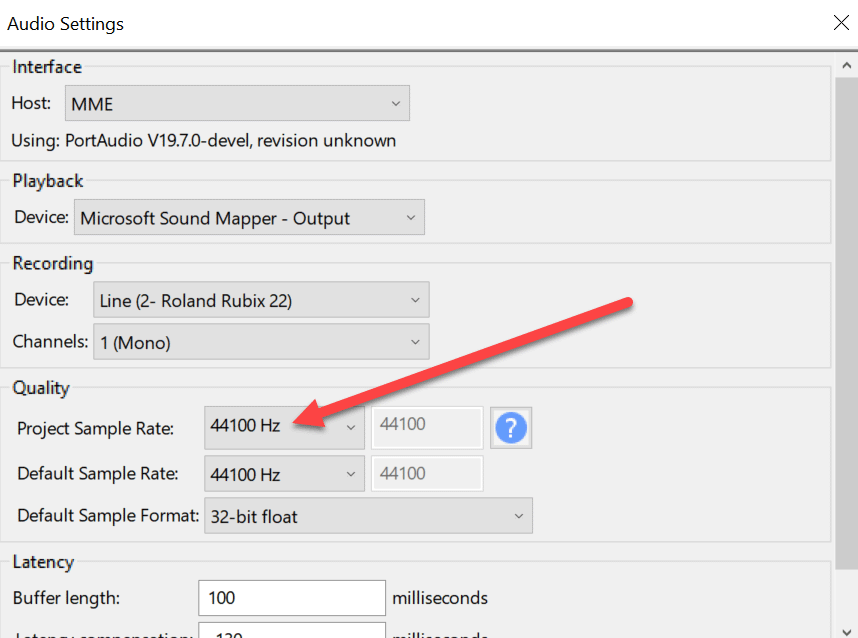
4. Export new WAV file
File -> Export -> Export as WAV.
You can also use Audacity to export 8 Bit WAV, u-law, a-law files, and many other formats.
To export in 8 Bit format choose “other uncompressed files” options during the export:
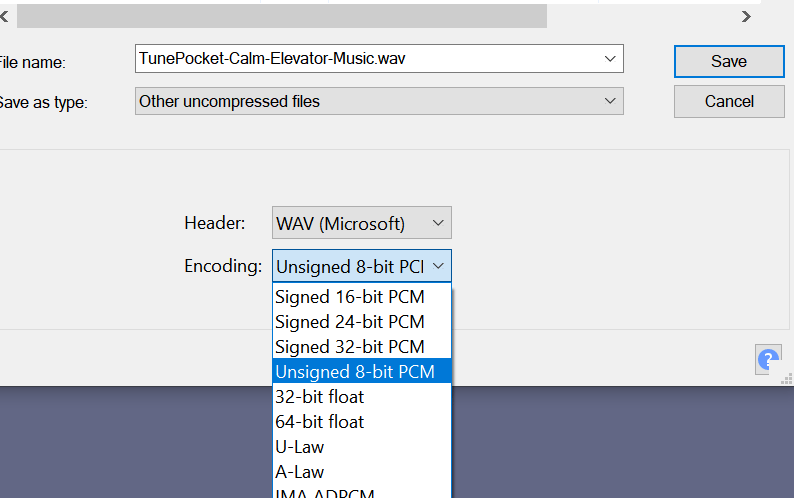
5. Here’s the result (16 Bit 8 kHz mono WAV)
Questions? Comments?
This post explored how you can choose, license, and change file types for on hold music.
Let us know what you think by posting a comment!
Download 12,000+ Royalty Free Music Tracks And Sound FX
Unlimited download | Lifetime license | Commercial use

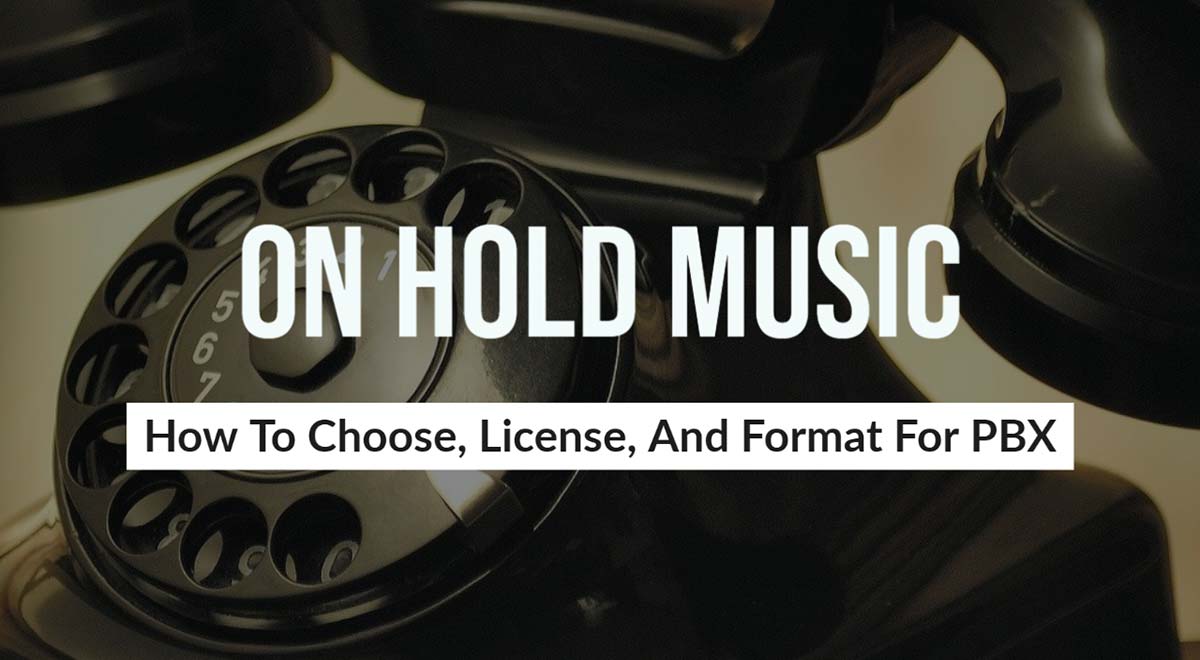


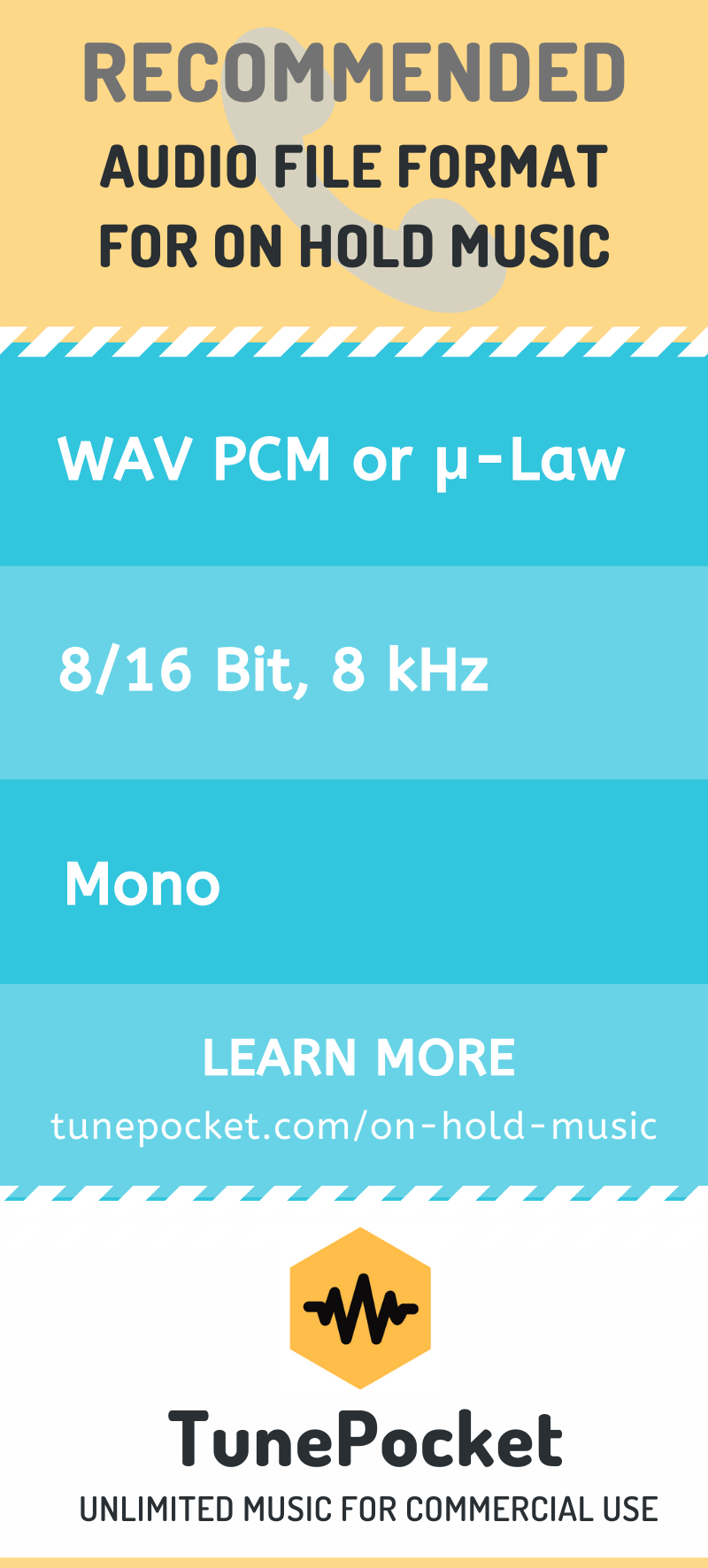
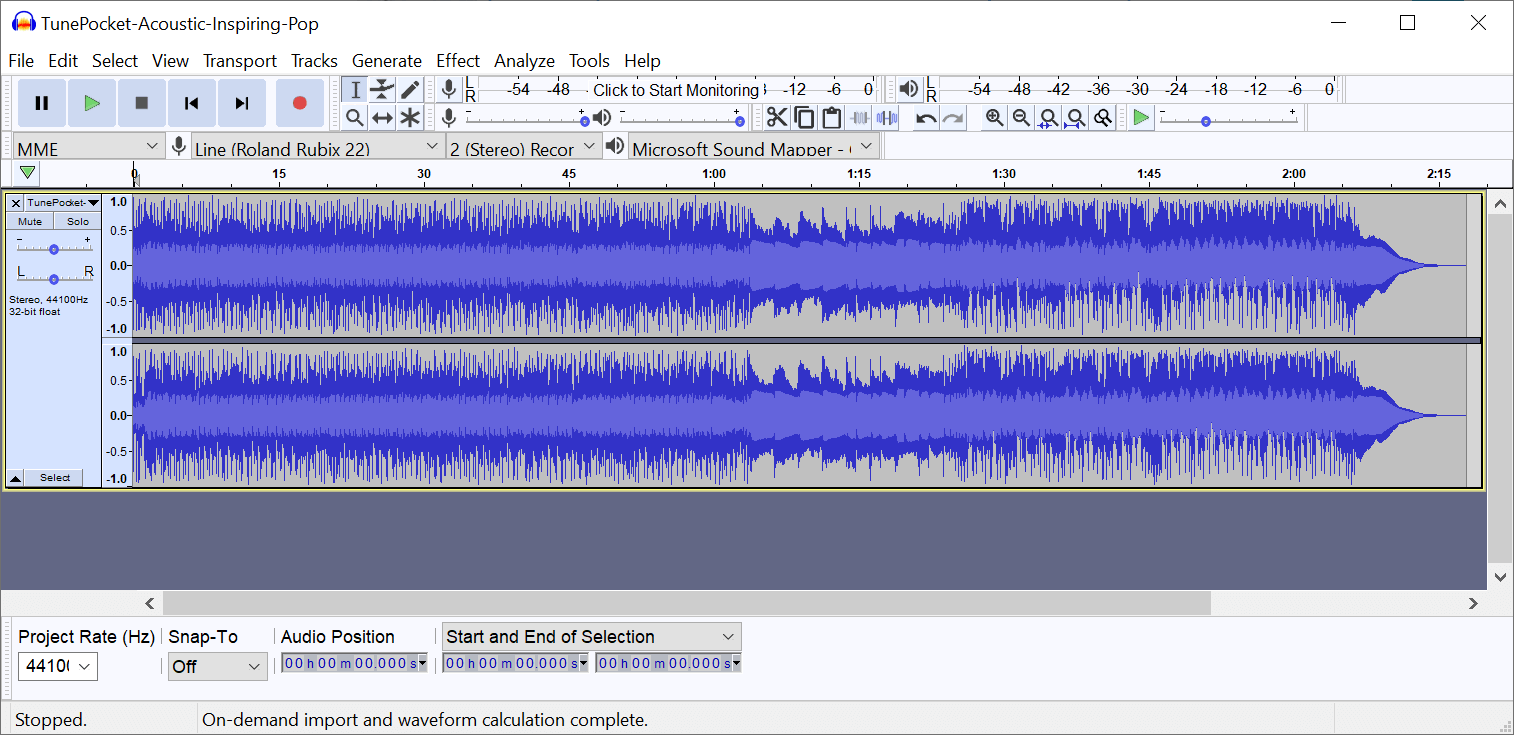
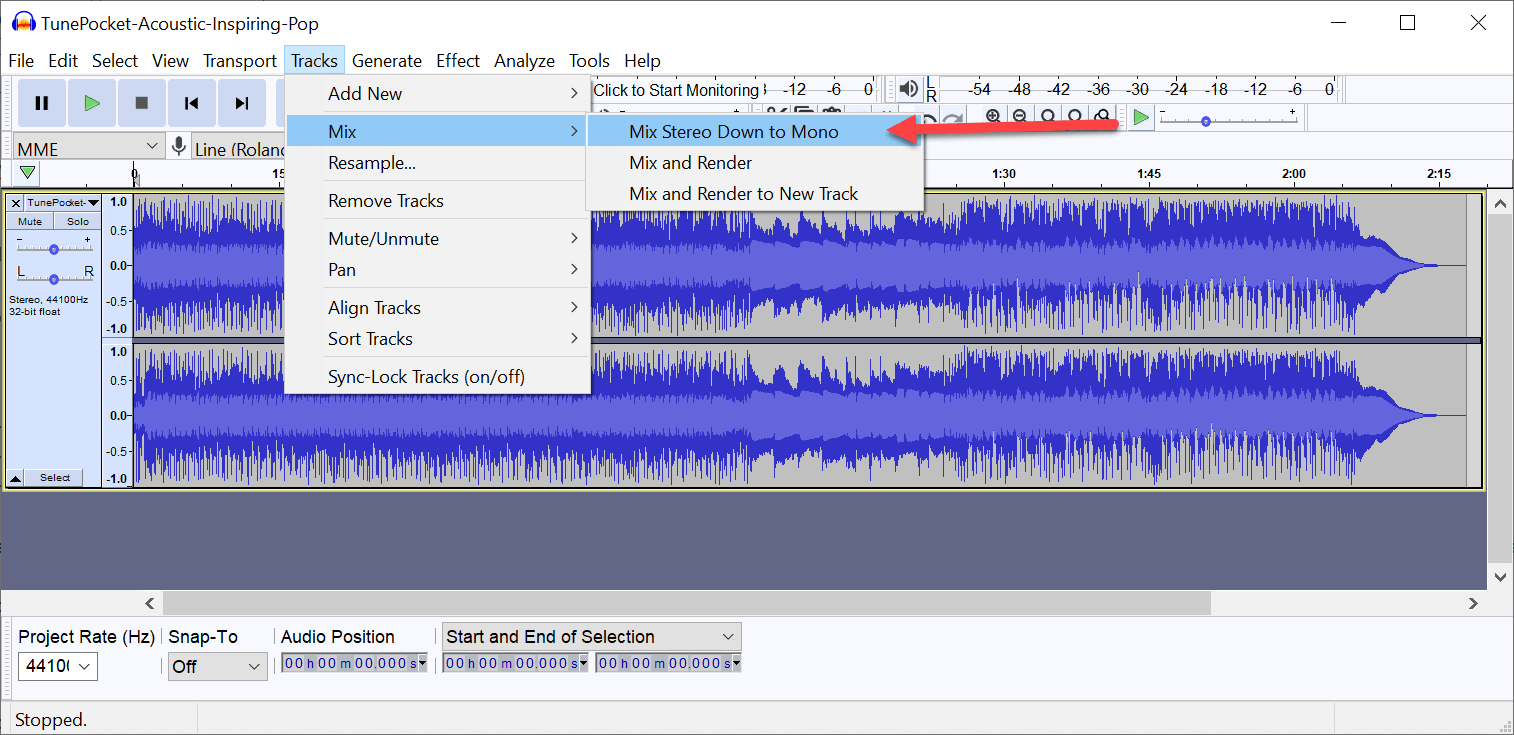
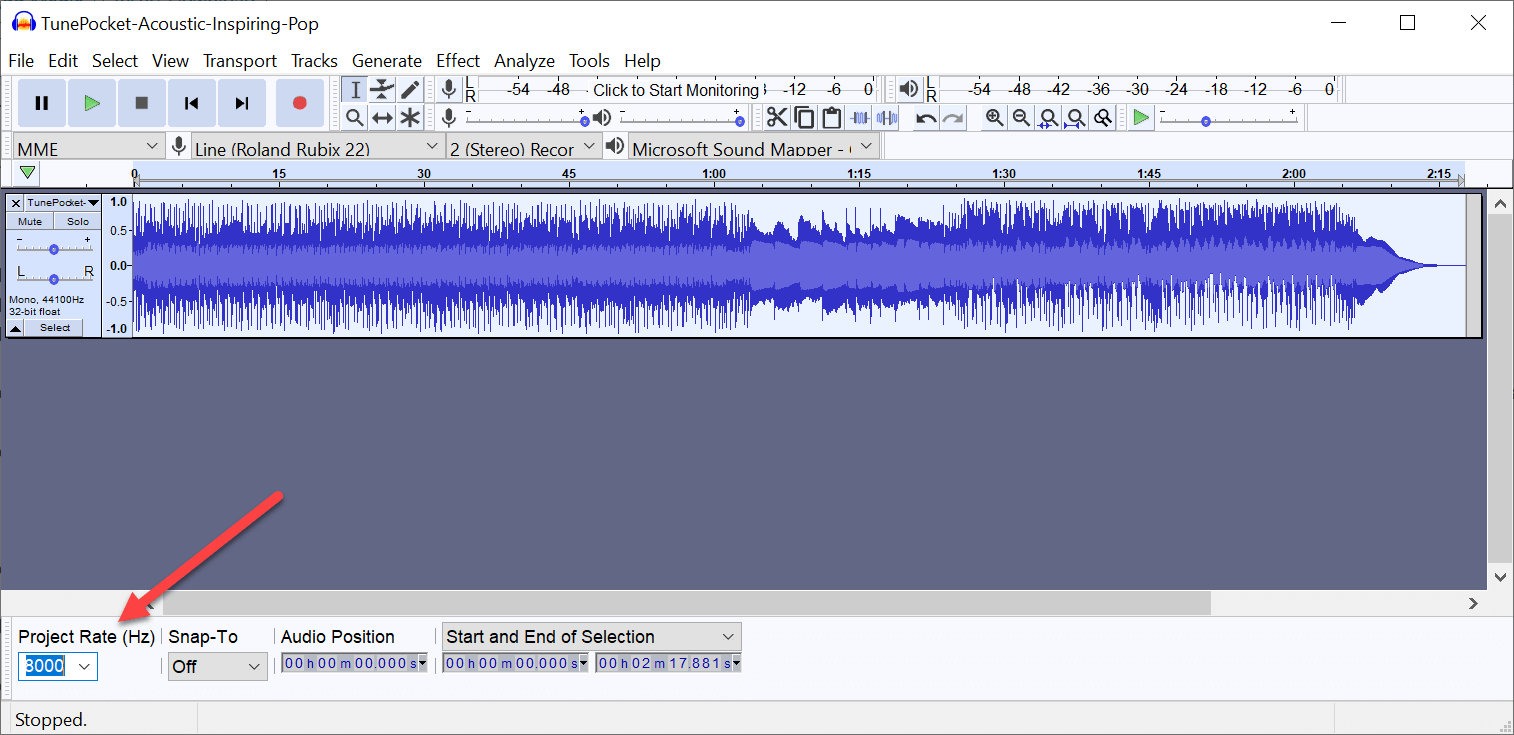
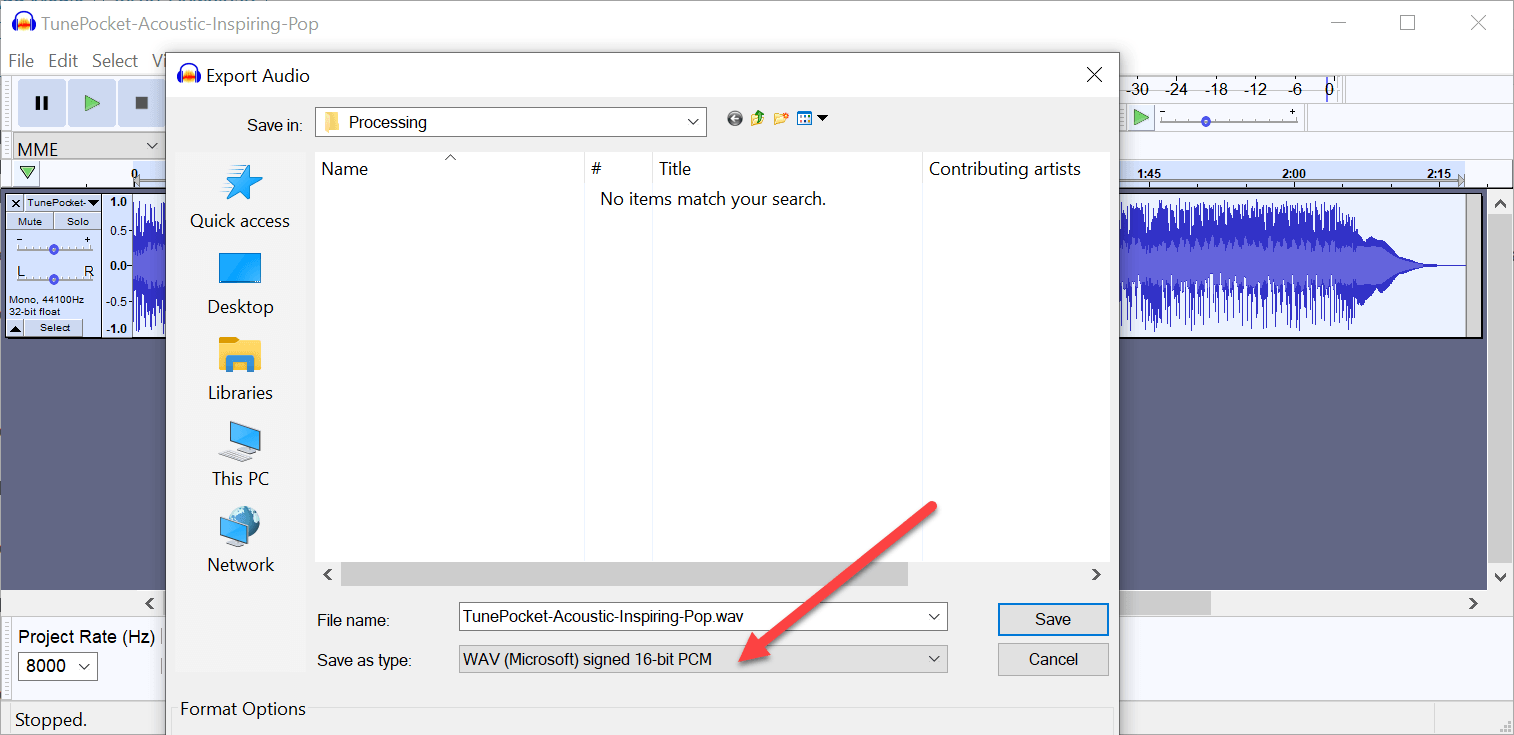

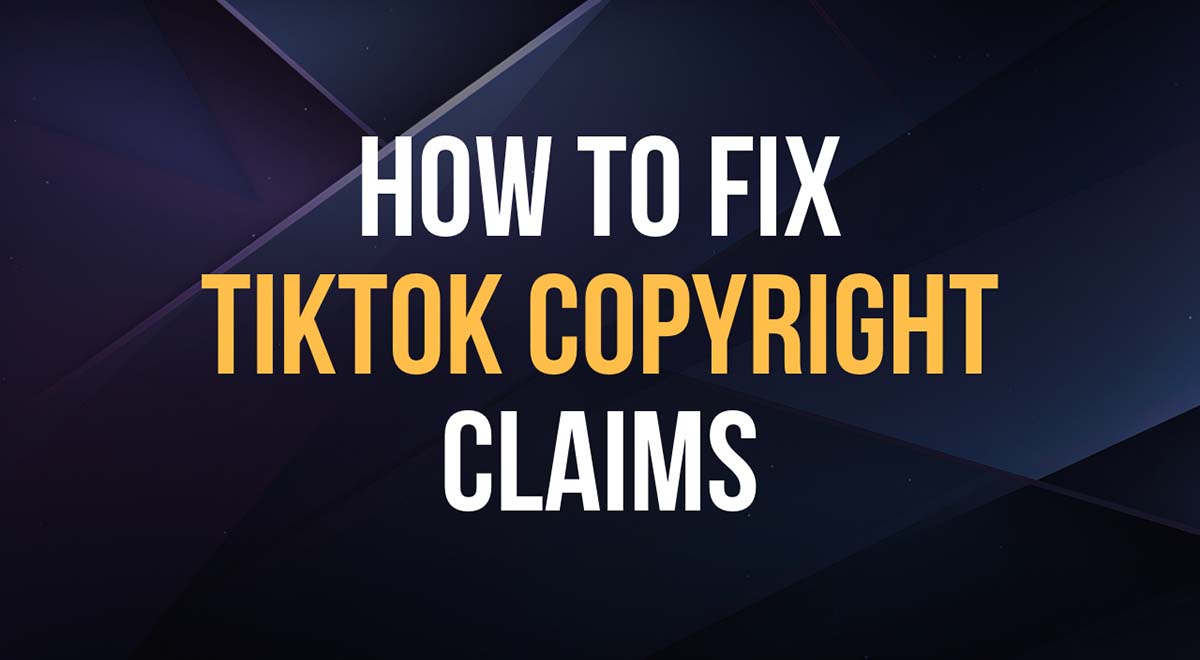
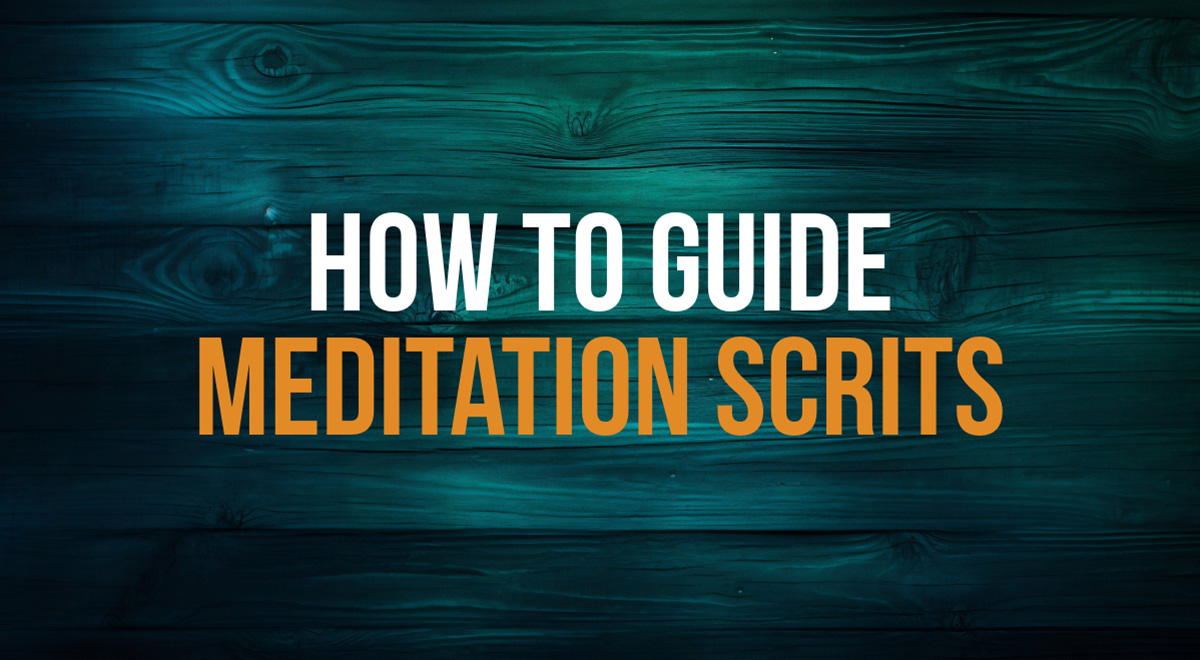
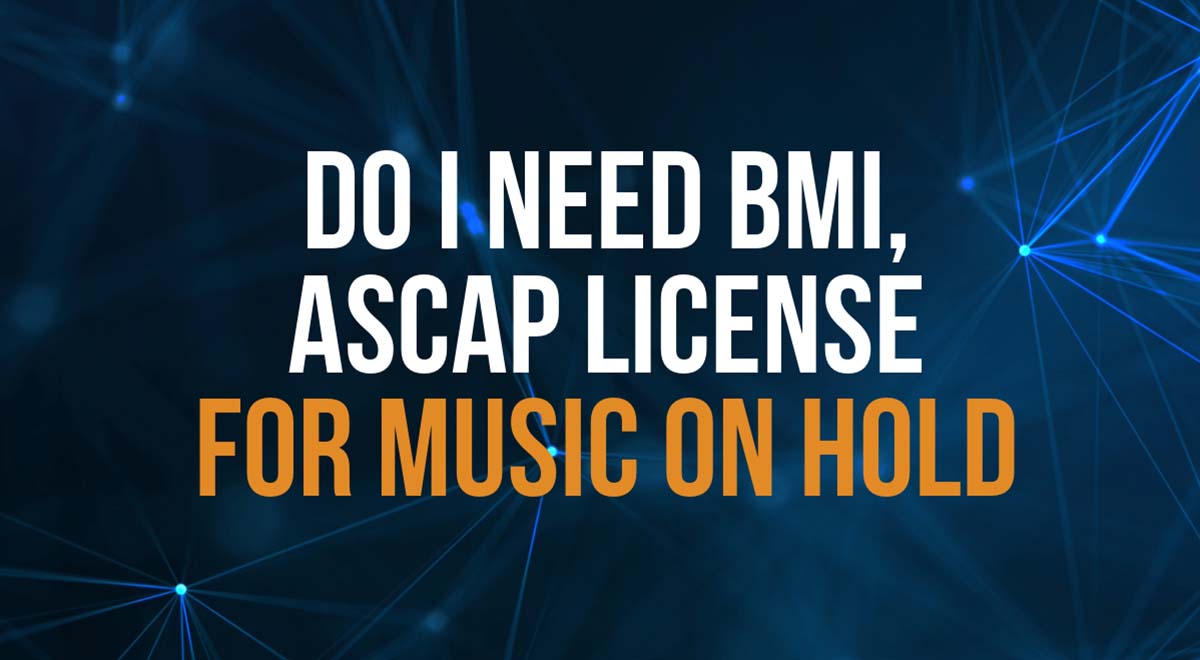


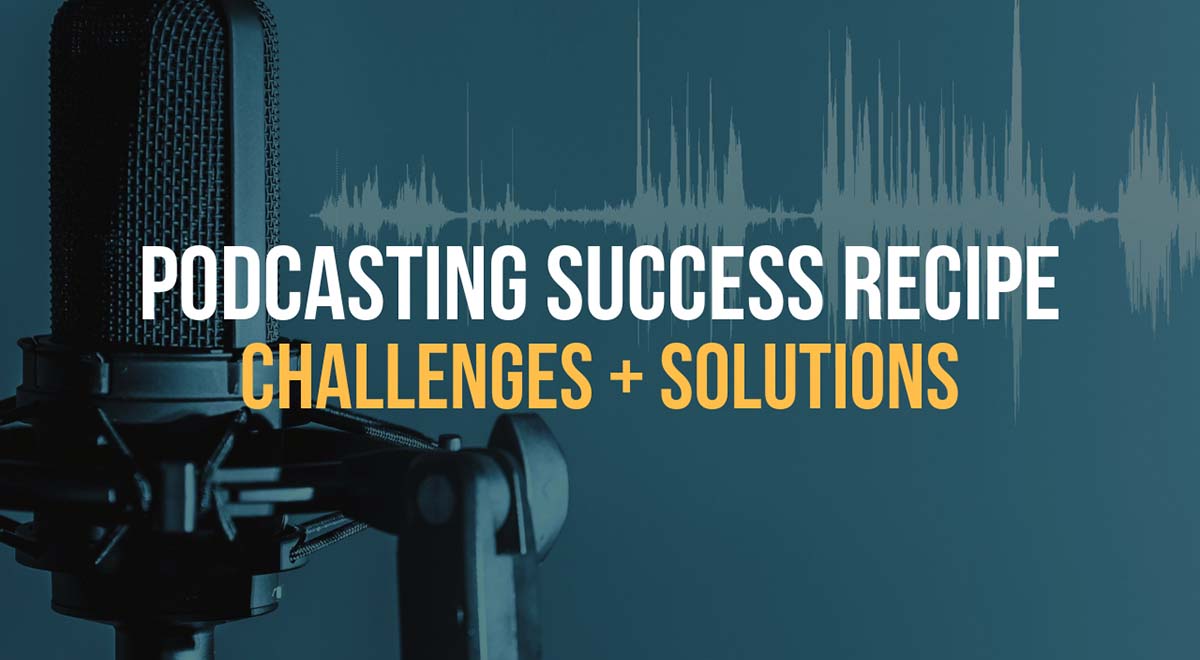
Thanks for updating the tutorial! I was trying to convert to 8 bit mono file to upload to our on hold phone system with the new Audacity and the interface has changed. Now it’s clear!